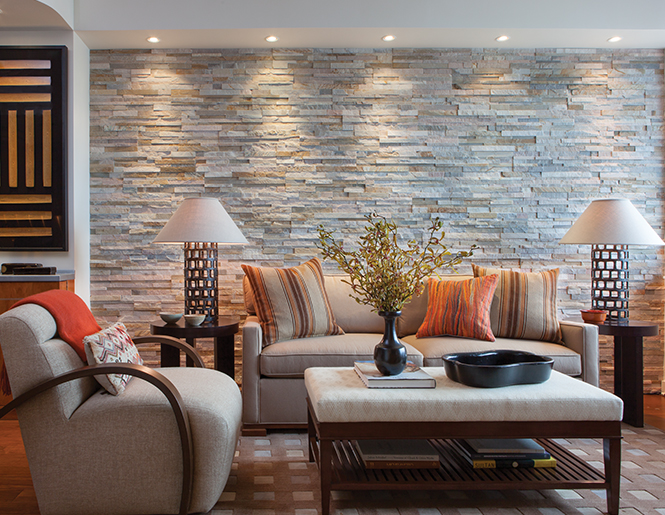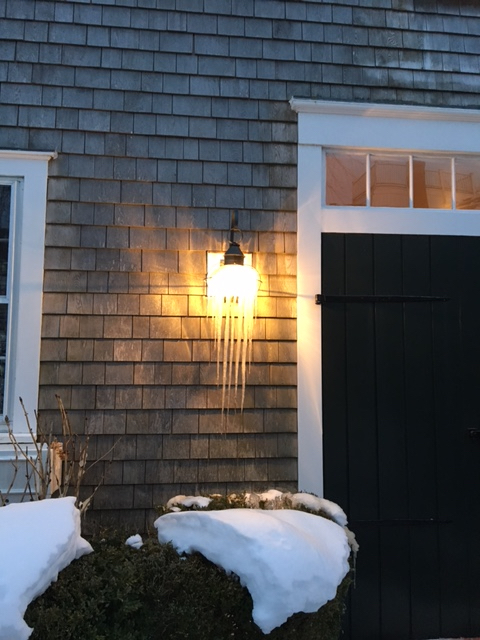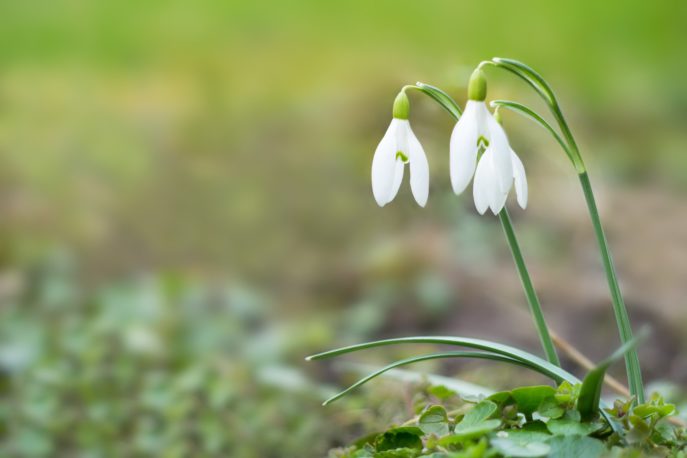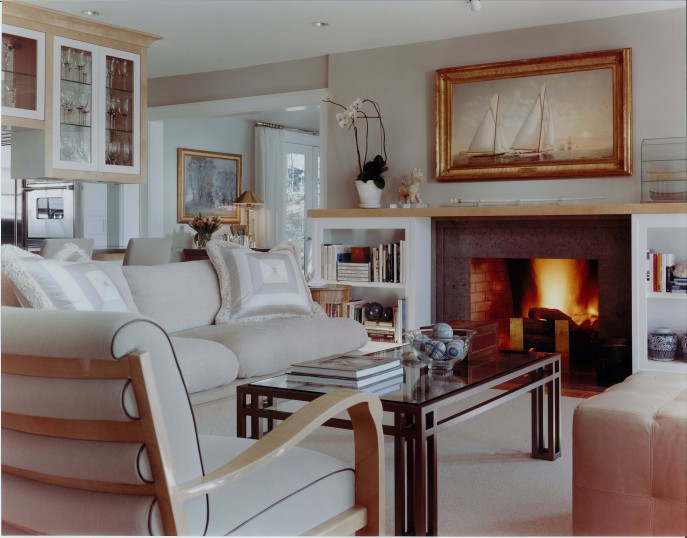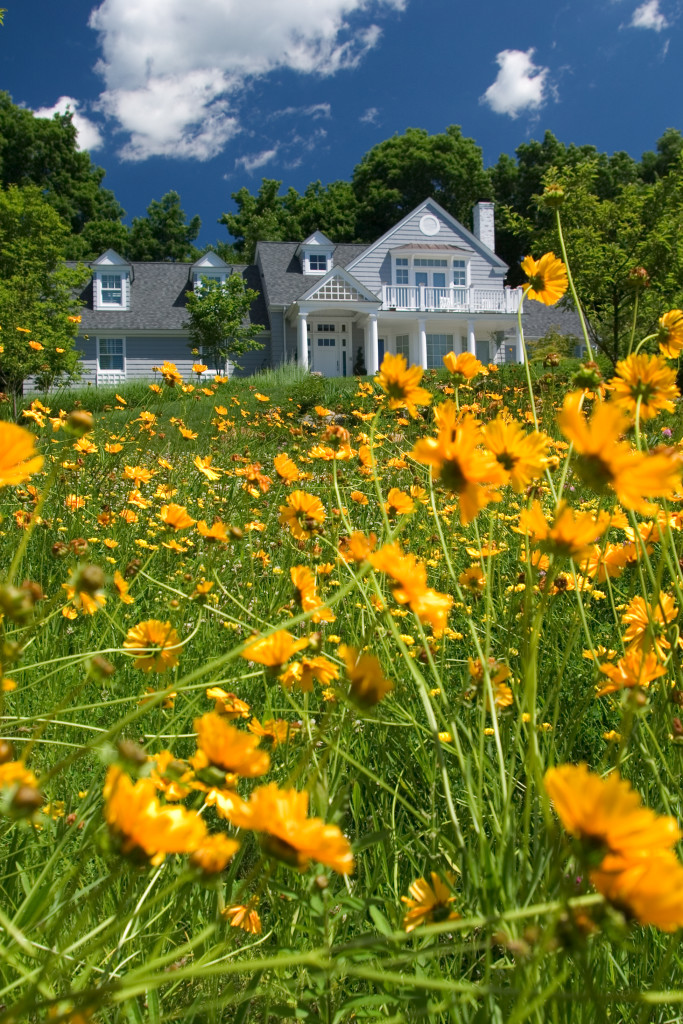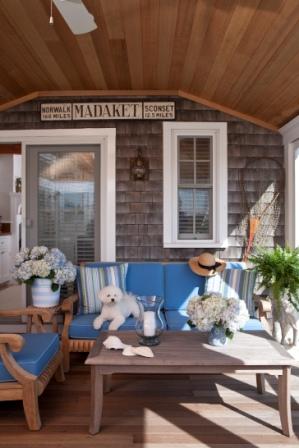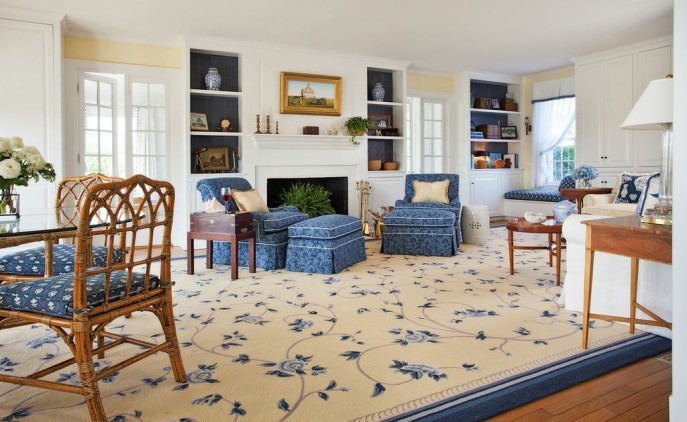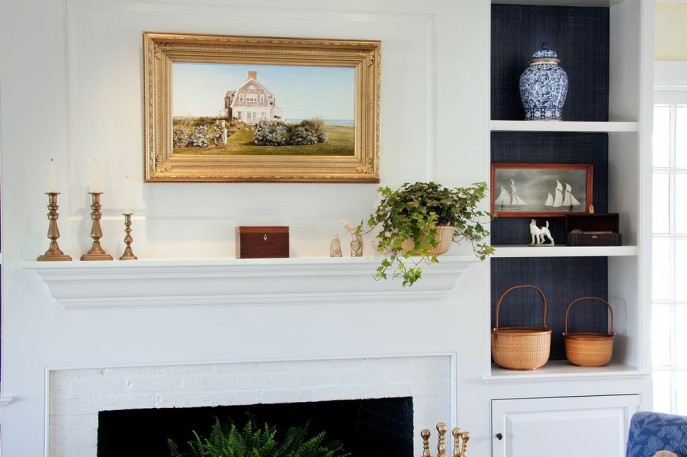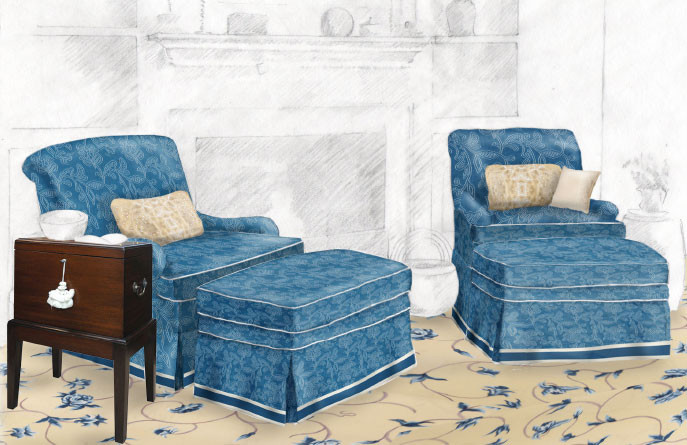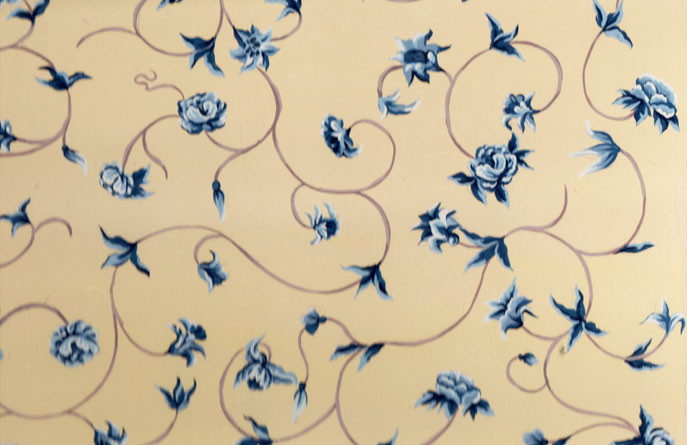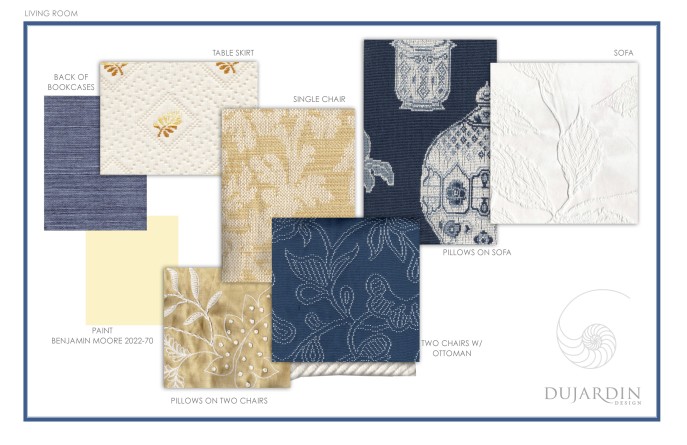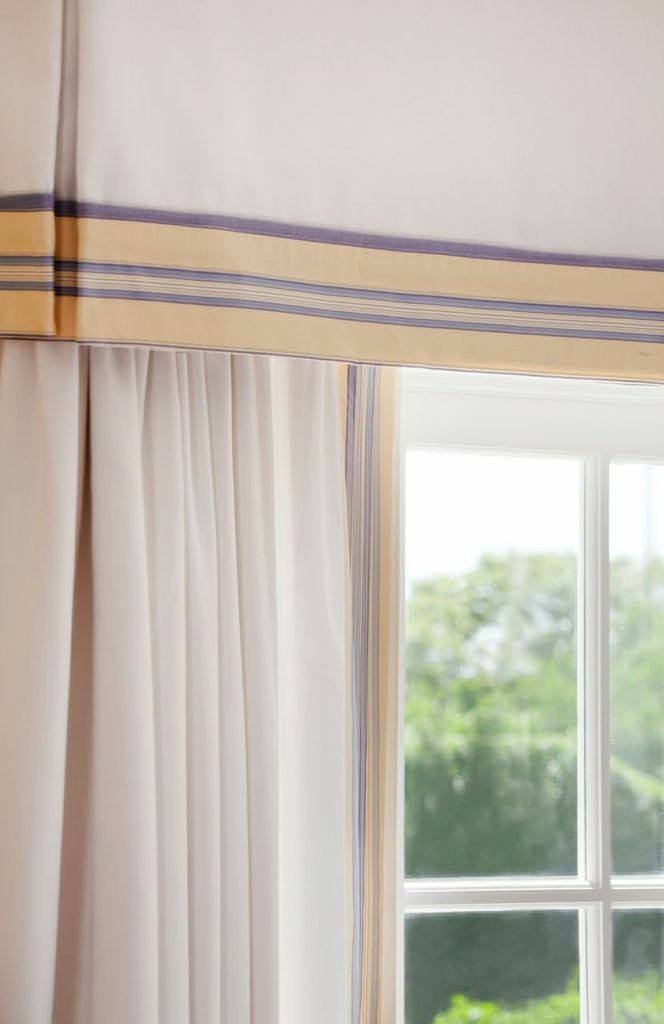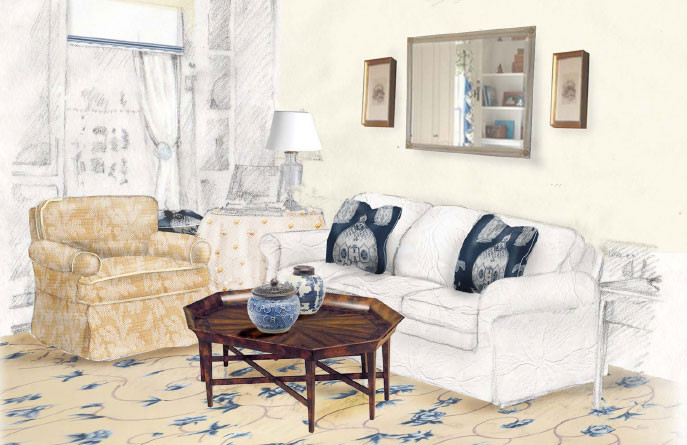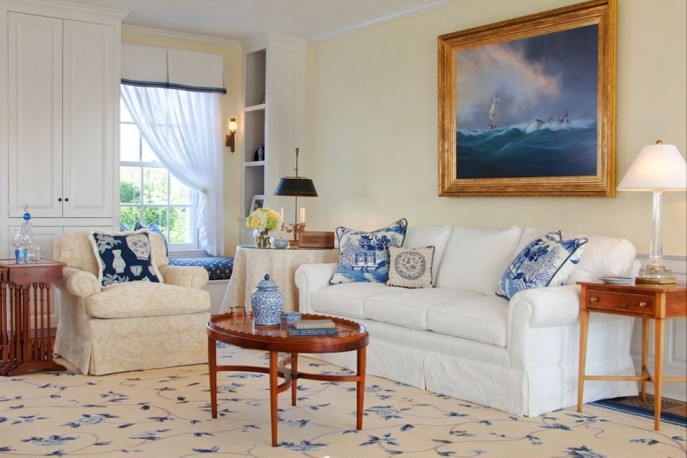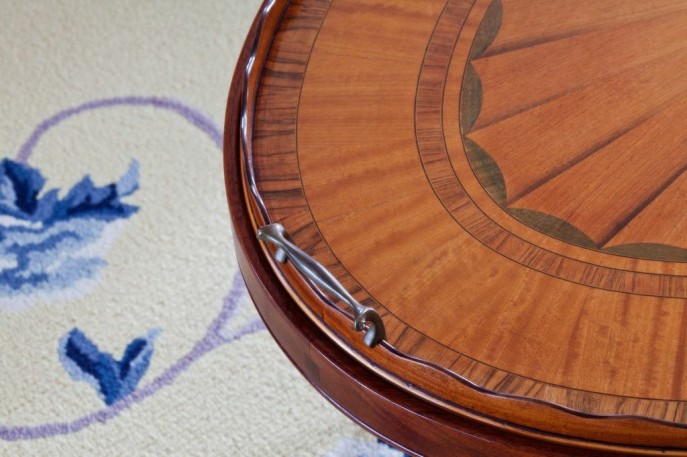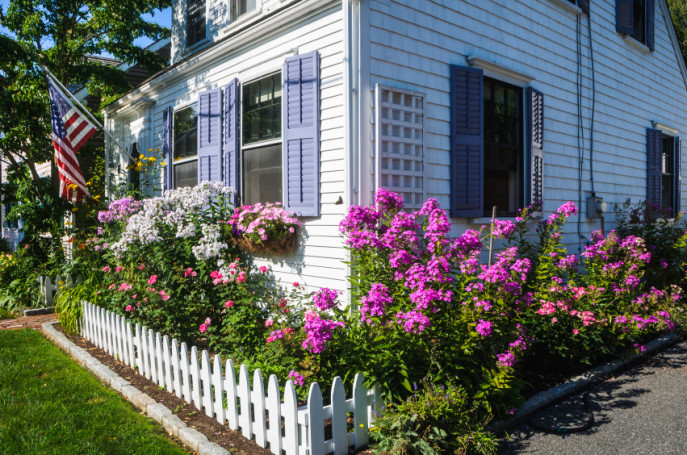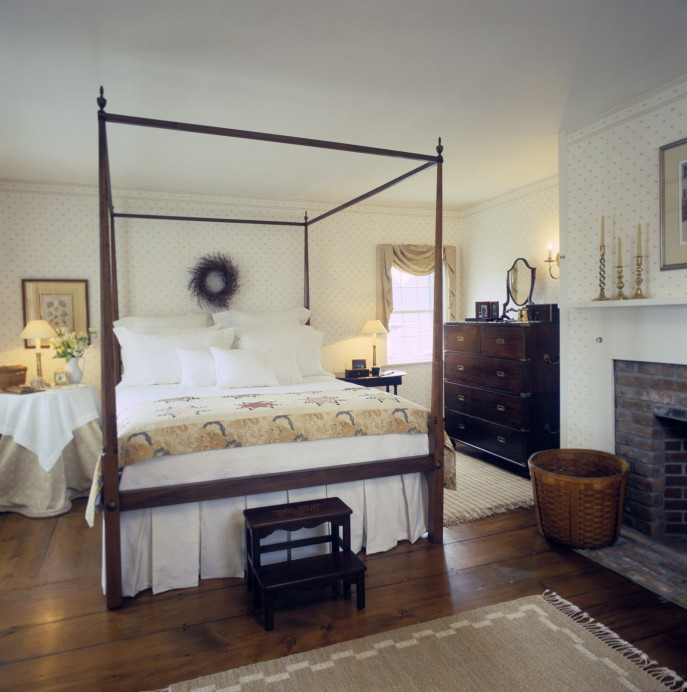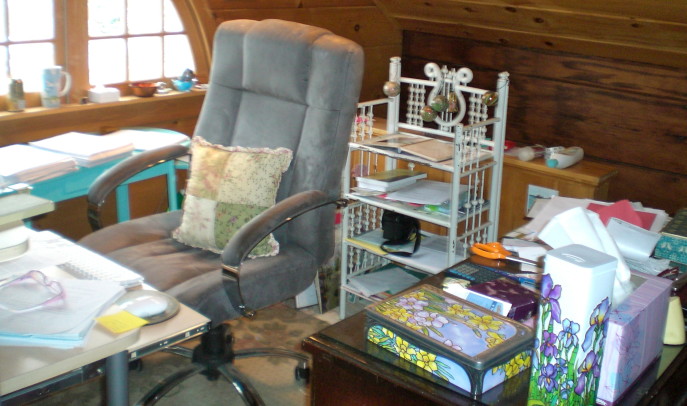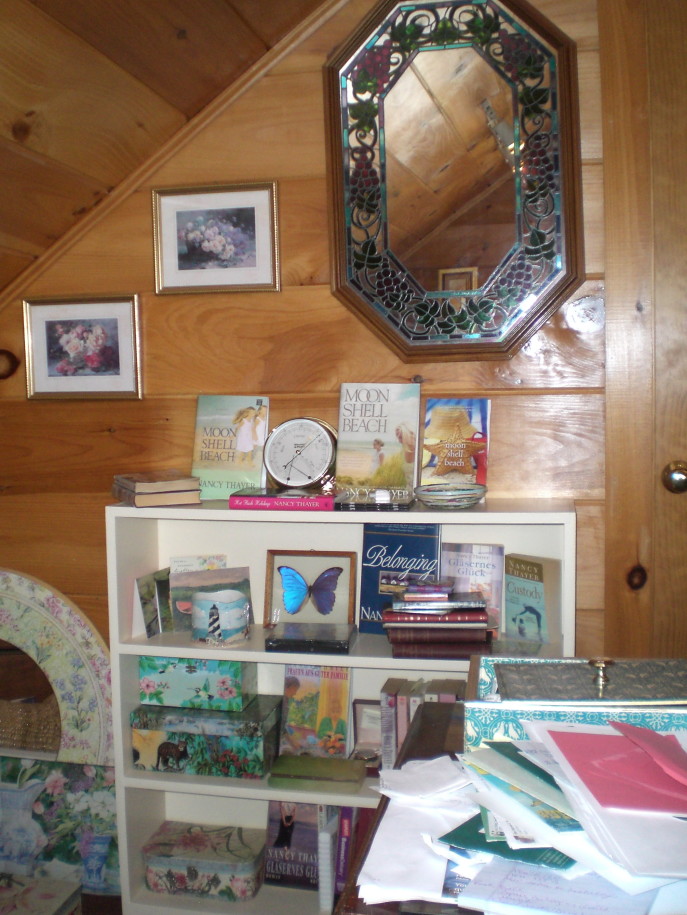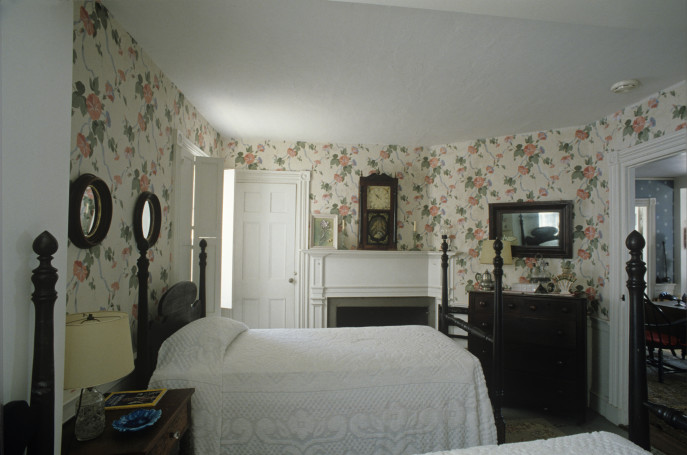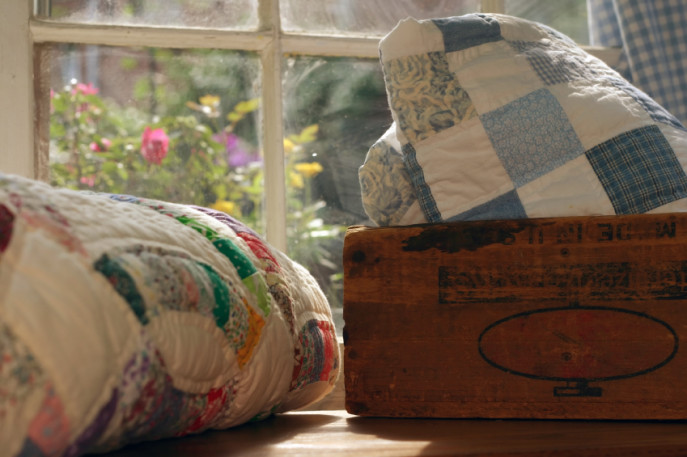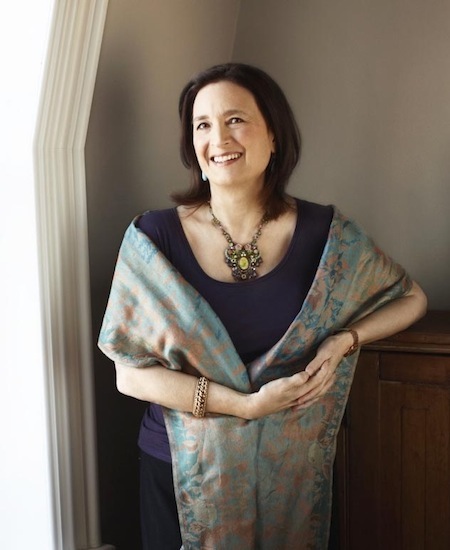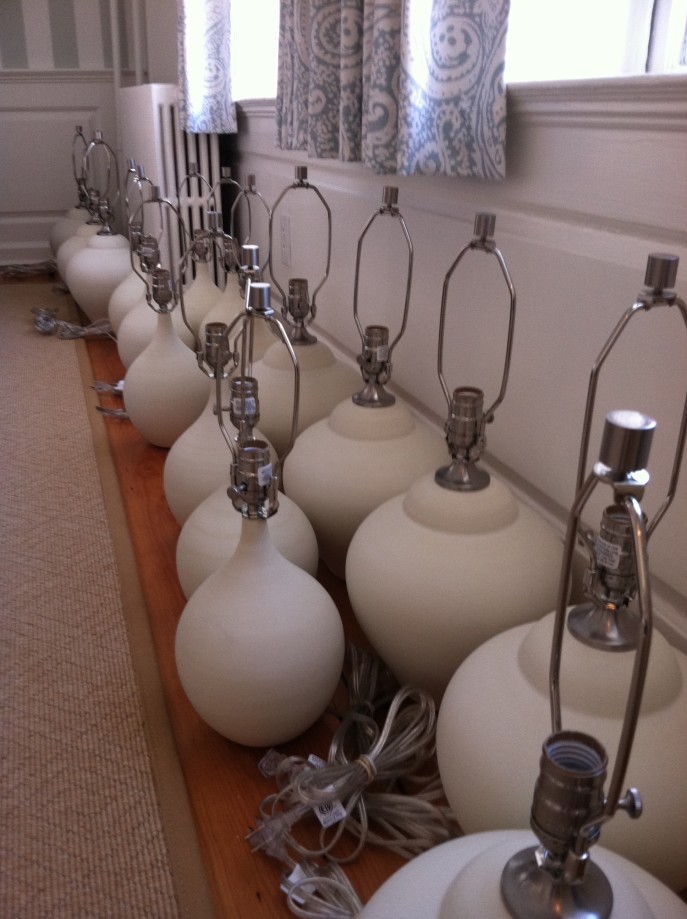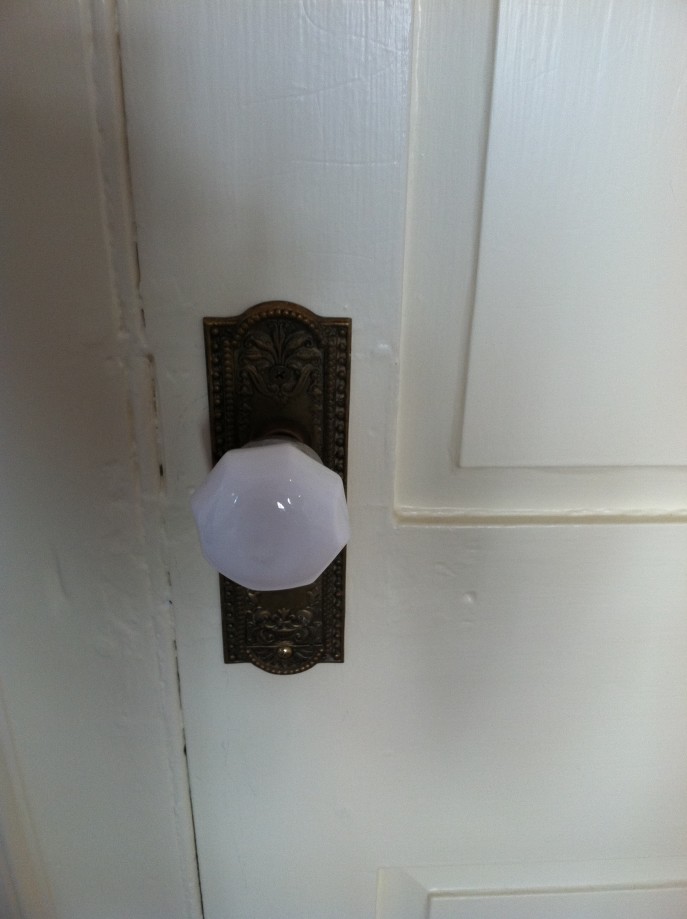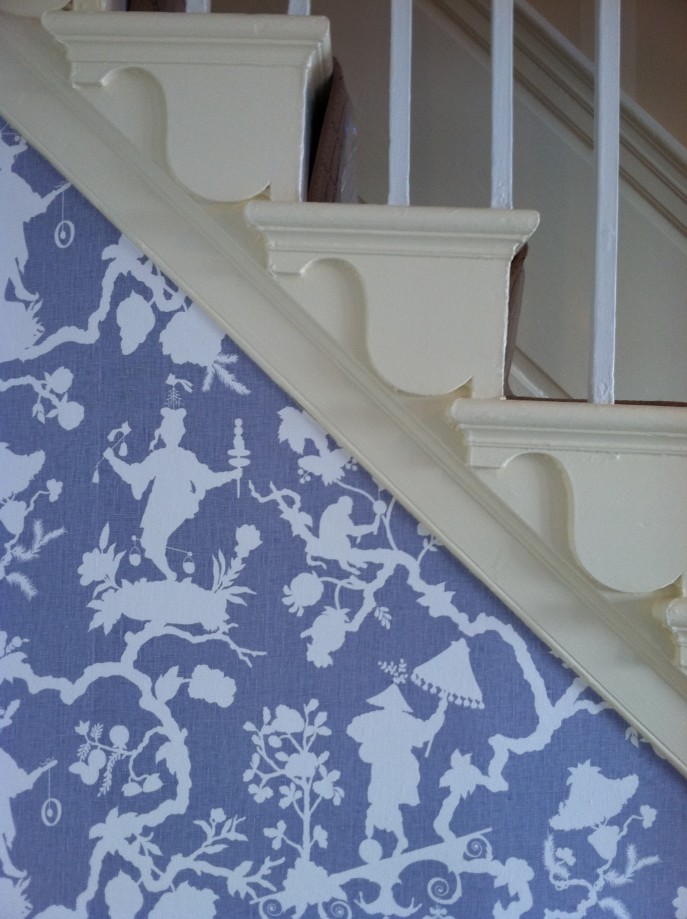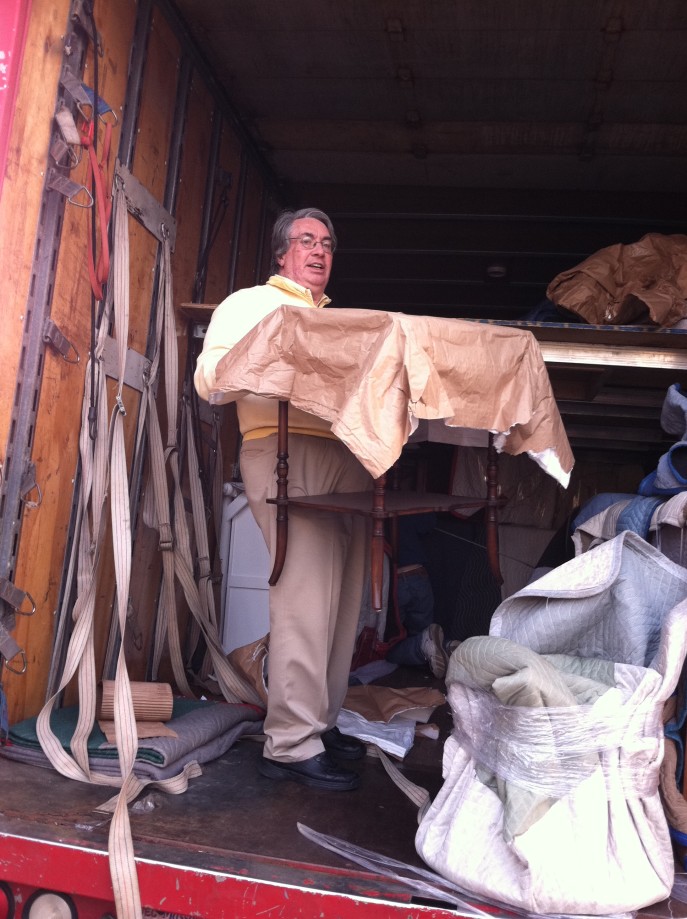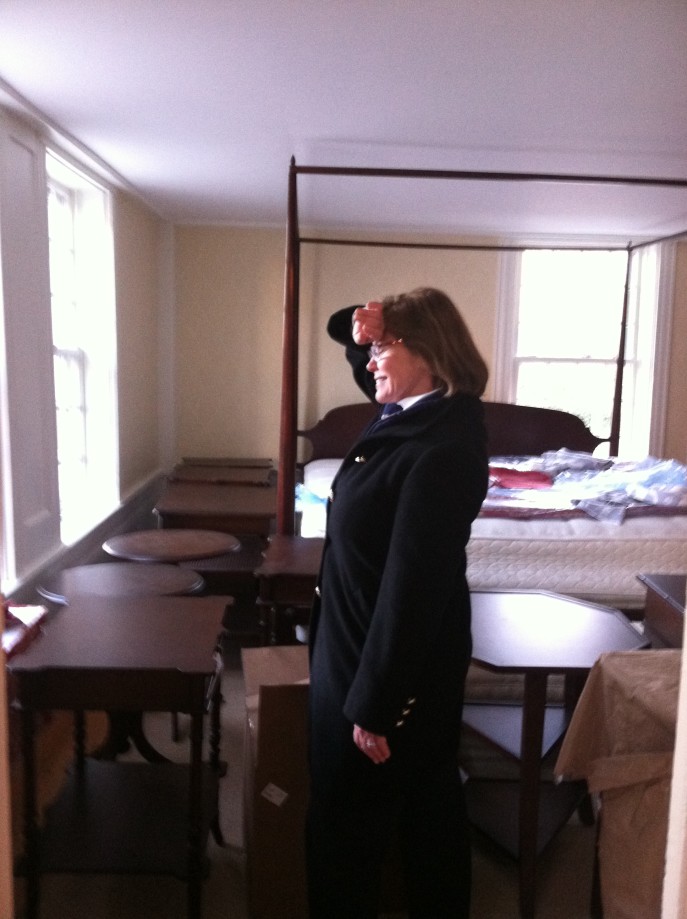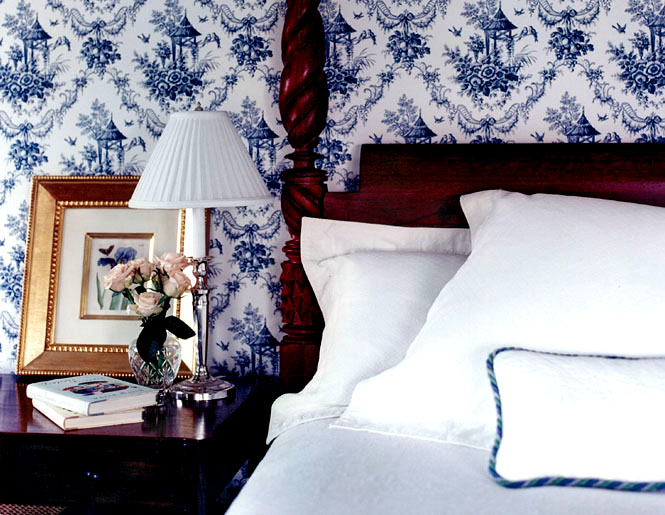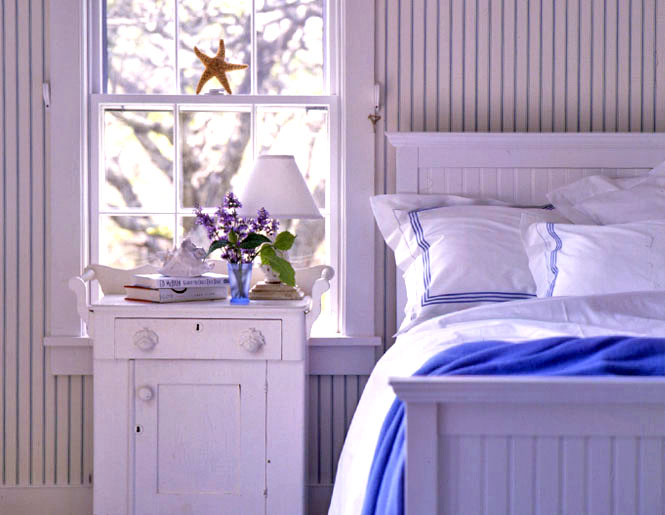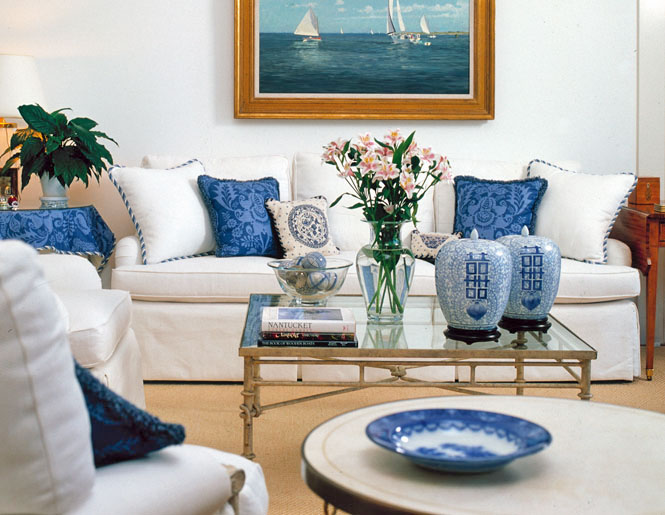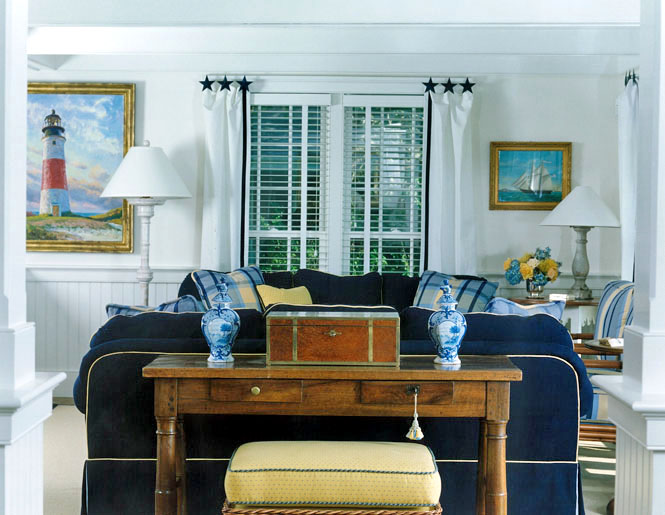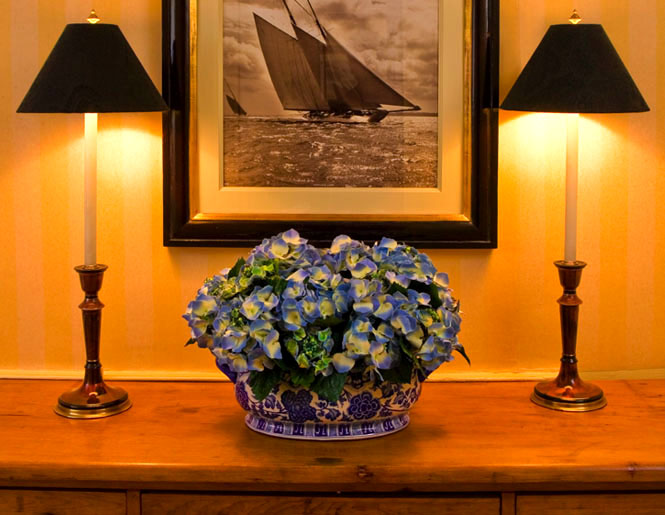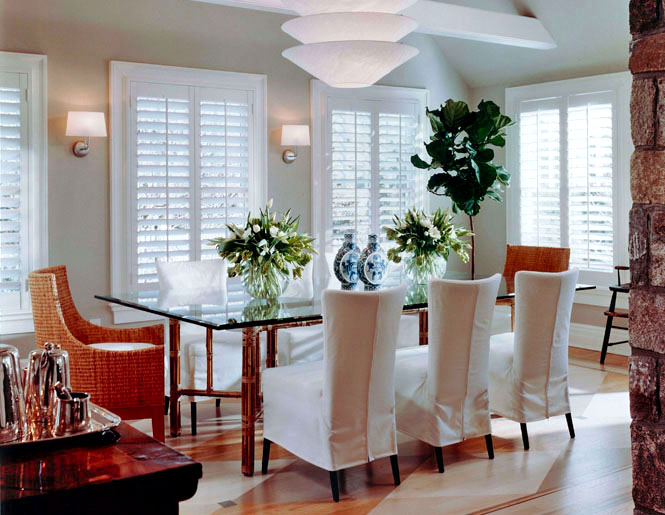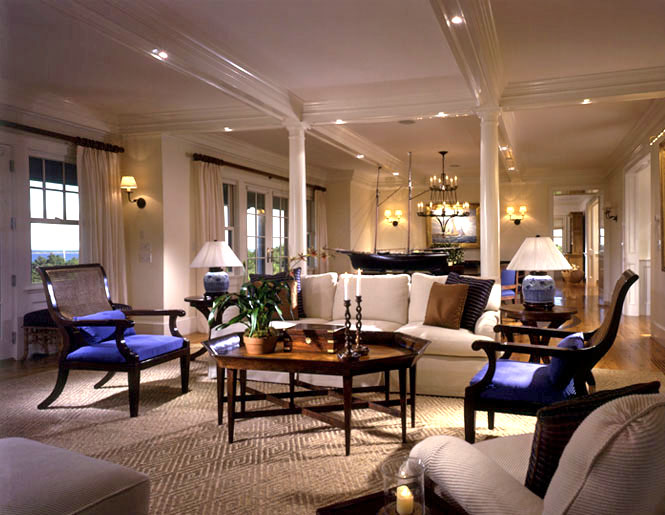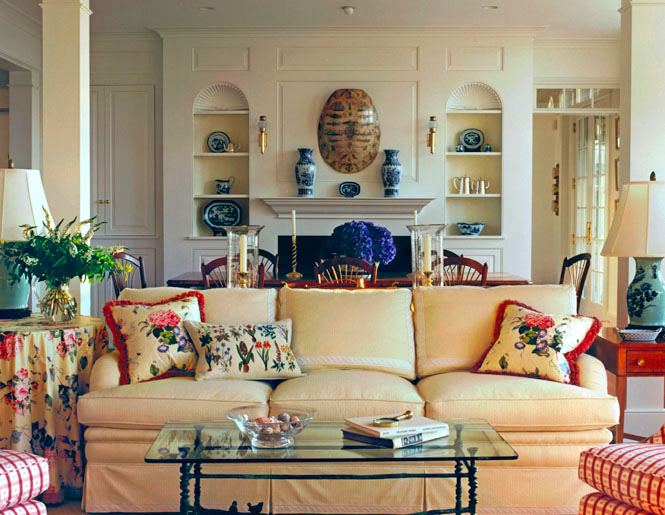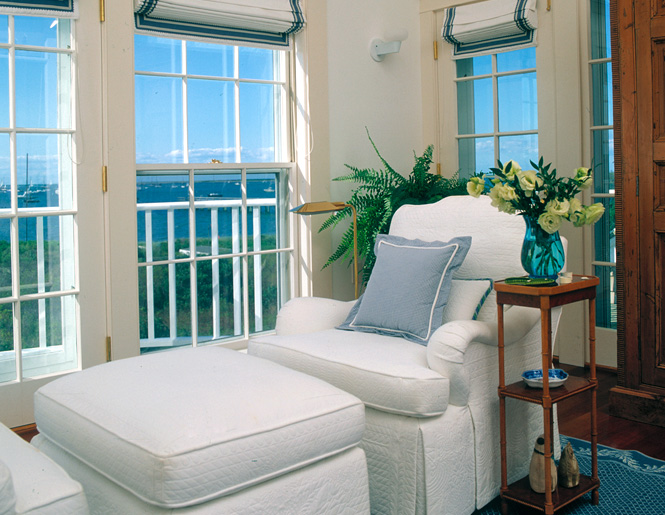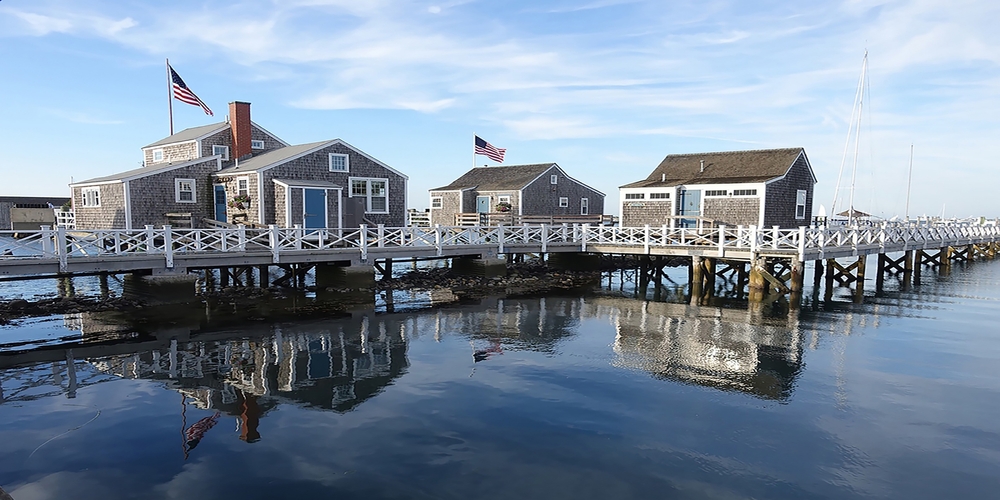
Everyone’s talking about the Netflix mini-series “The Perfect Couple,” and the beauty of its setting on Nantucket. There’s something magical about life on an island. No wonder people watch the Netflix show and dream of creating their own serene, seaside retreat–no matter where they live!
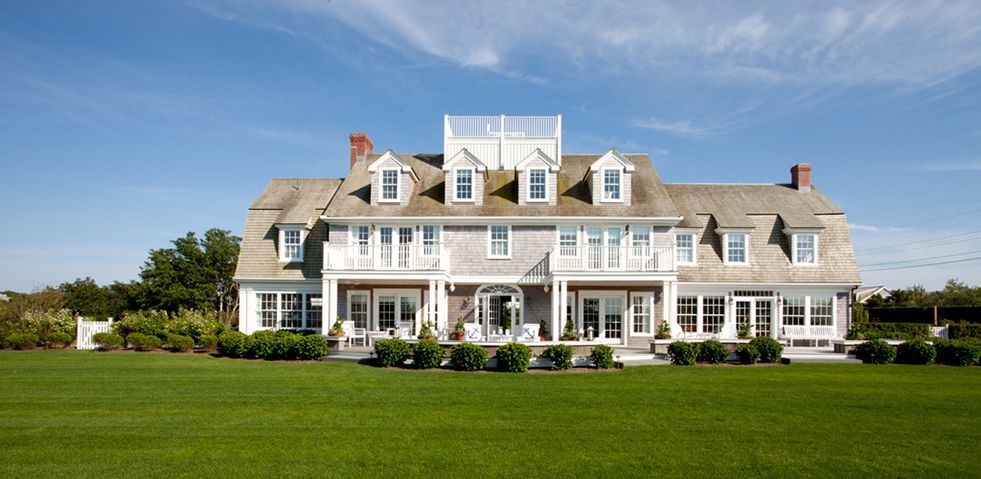
I’ve been so fortunate to live on Nantucket through the beauty of its seasons over many years. I’ve helped my clients create their own island dream homes in historical sea captains’ houses, beachfront bungalows, upside down cottages (where the living room is upstairs instead of the bedrooms–better for the views!) and gracious, windswept estates very much like the home Summerland owned by Tag and Greer in the TV show.

The good news is: you don’t have to live on the island, or even close to the coast, to incorporate the charm of a nautical, island look, and feel like you’re on vacation all year round. Here are my favorite ways to create that New England island style:
1. Go BREEZY with Blue and White.
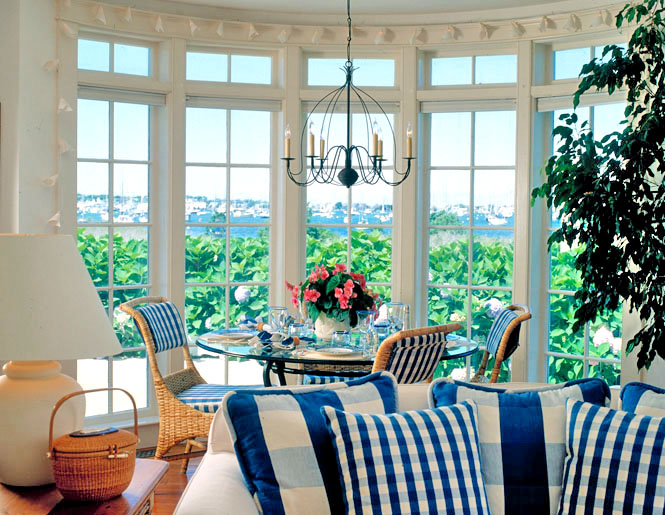
Blue and white keeps your rooms feeling airy and light, as if it’s possible to throw open the windows and feel an ocean breeze. I love to use “white plus one color” to keep a room feeling calm and relaxing. This is your island sanctuary!
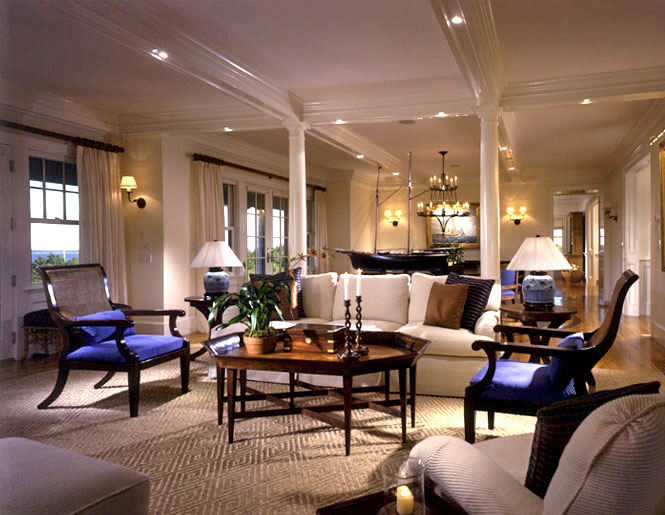
This living room was decorated in island shades of sand, driftwood, and deep sea blue.
2. If your windows don’t FRAME AN OCEAN VIEW, frame some art that does.
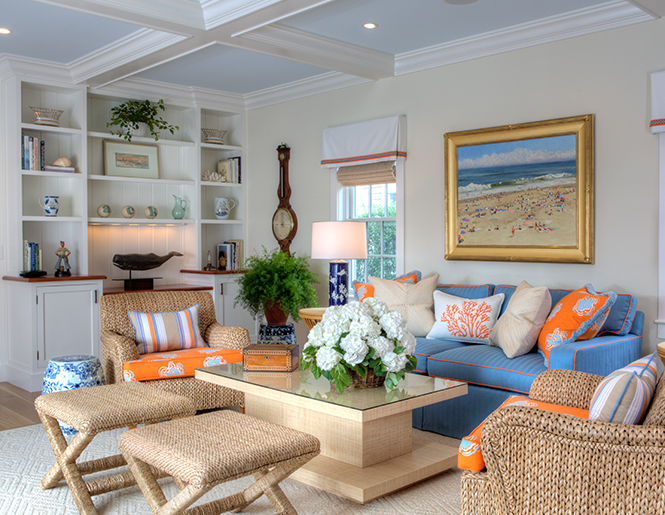
The painting above the sofa, Summer’s Magic 2013, by marine artist David Bareford, is almost another window to the outside. The room’s color palette is crisp and clean. Most of the walls are painted white or ivory, with bright white trim and a pale blue recessed coffered ceiling, evoking a summer sky.
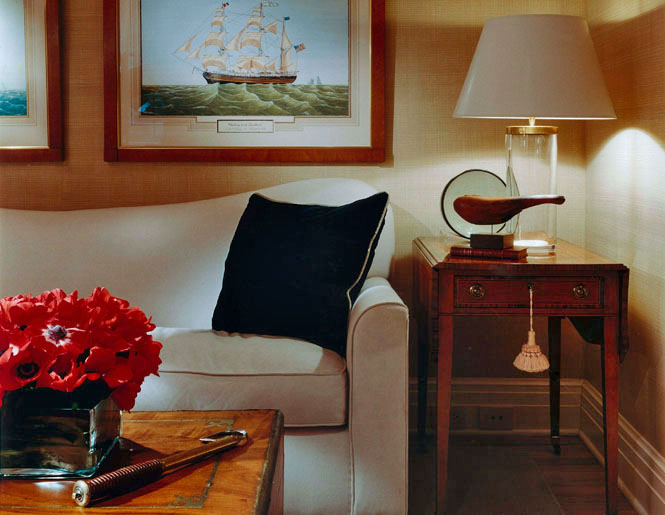
This painting is by the late American marine artist, Robert R. Newell, who was well-known for his whaling ship watercolors. His work hangs in both the Nantucket and New Bedford Whaling Museums. A lighthouse lens is on the end table behind a piece of whale art that was carved by my late uncle, the furniture designer William Stefanov.
3. USE A LIGHT TOUCH to tell a story of a simpler way of life.
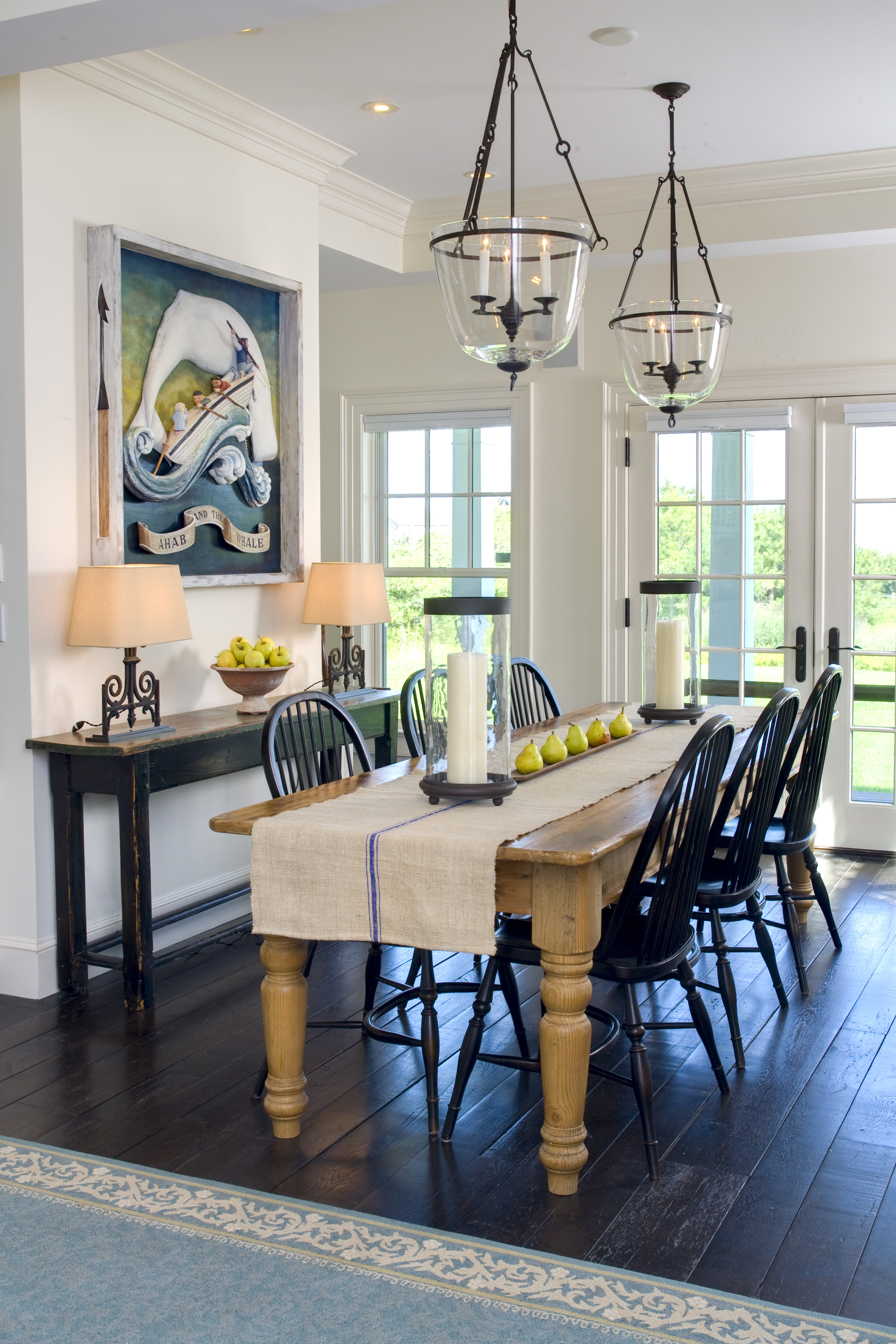
The hanging light fixtures are contemporary versions of the 19th century Colonial “smoke bell,” designed to keep candles from blowing out and smoke from marking the ceiling. The wall carving, Ahab and the Whale, was created by Paul McCarthy, a Nantucket master woodcarver. A harpoon hangs by its side, reflecting the rich history of Nantucket.
4. REWRITE HISTORY by evoking the charm of early seaside cottages.
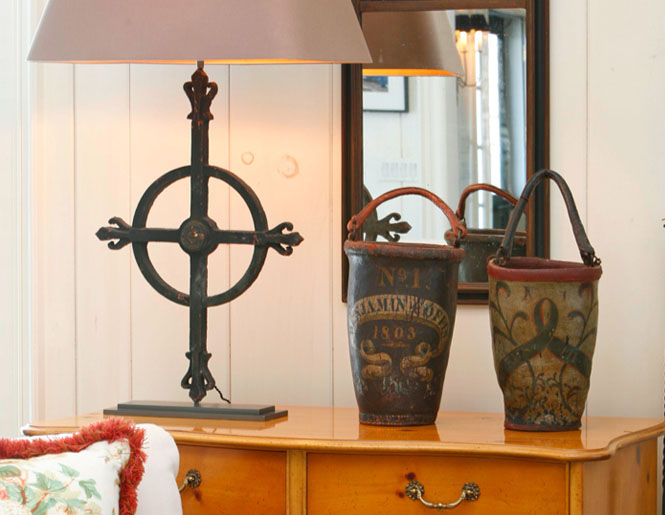
There was a time when every home on Nantucket had these leather fire buckets, needed for fighting fires at home as well as helping out when neighbors were in trouble. Bring in a few meaningful pieces from the past to add depth and interest to your rooms, while evoking earlier island life.
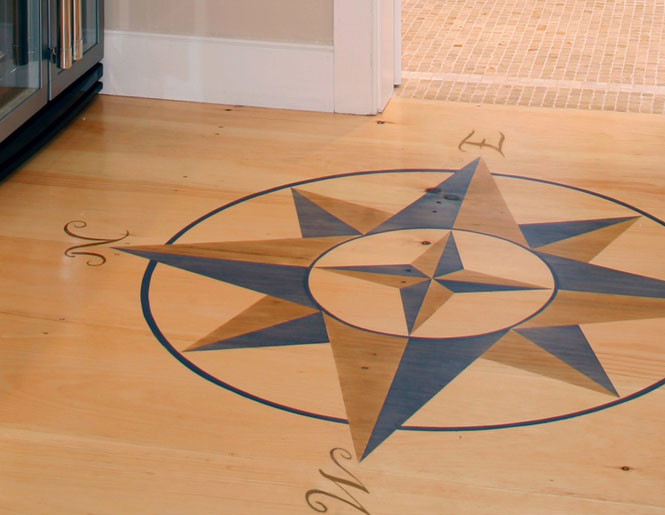
The compass rose in fabric and floor designs, either painted or inlaid, is a favorite for our island clients. The first magnet compass was likely made in Italy around 1200 BCE. Designed in a fashion that looked like the petals of a flower, the points of the compass rose indicated the cardinal directions of East, West, North, and South. It helped to orient a map in the proper reading direction.
5. Have a WHALE OF A TIME! Whatever you do, remember to have fun! Whale art is found everywhere on Nantucket, but there are lots of seaside motifs to choose from.
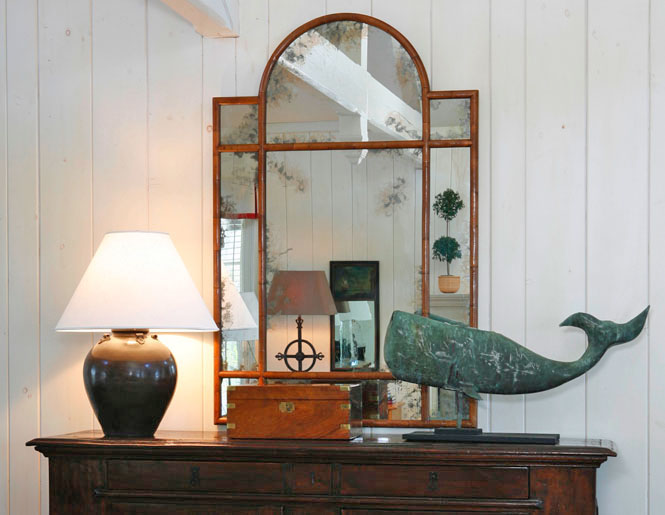
Large cetaceans not your vibe? Sailboats also evoke a marine-based lifestyle!
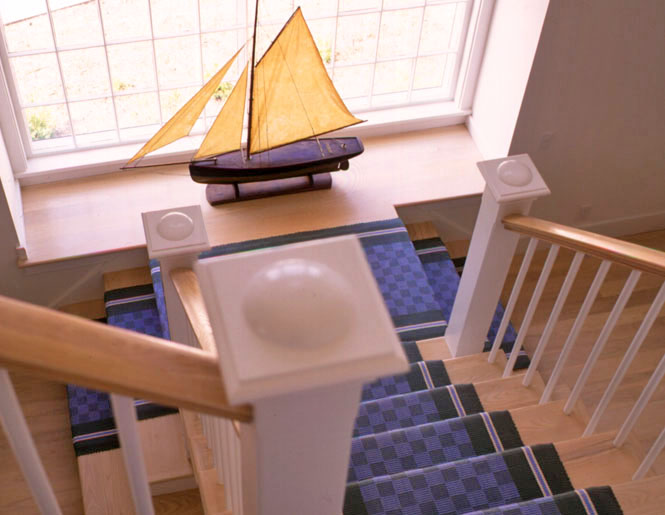
A beautiful design incorporating three shades of blue on a custom-made carpet naturally leads the eye to the antique ship’s model in the window.
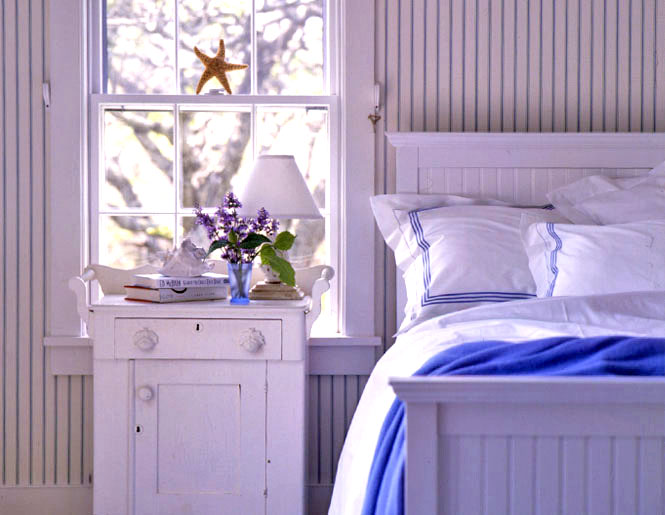
A simple starfish draws the eye to the sunny garden, and says a lot with just a little.
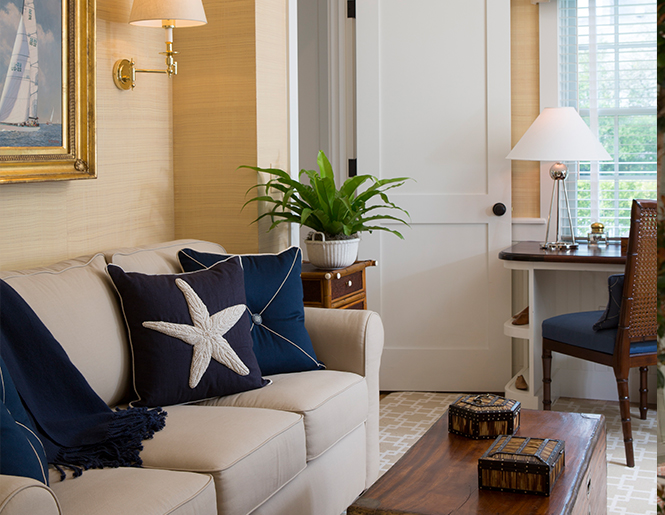
And starfish are a simple motif to repeat.

No couple is ever really “perfect,” but with a little time and attention, your partner can be perfect for you! Frank and I wish you smooth sailing and many happy landings!





